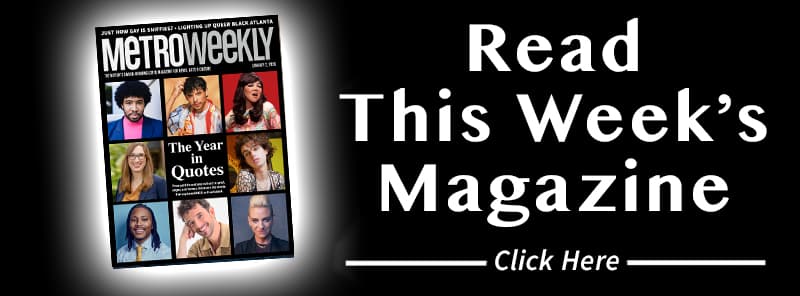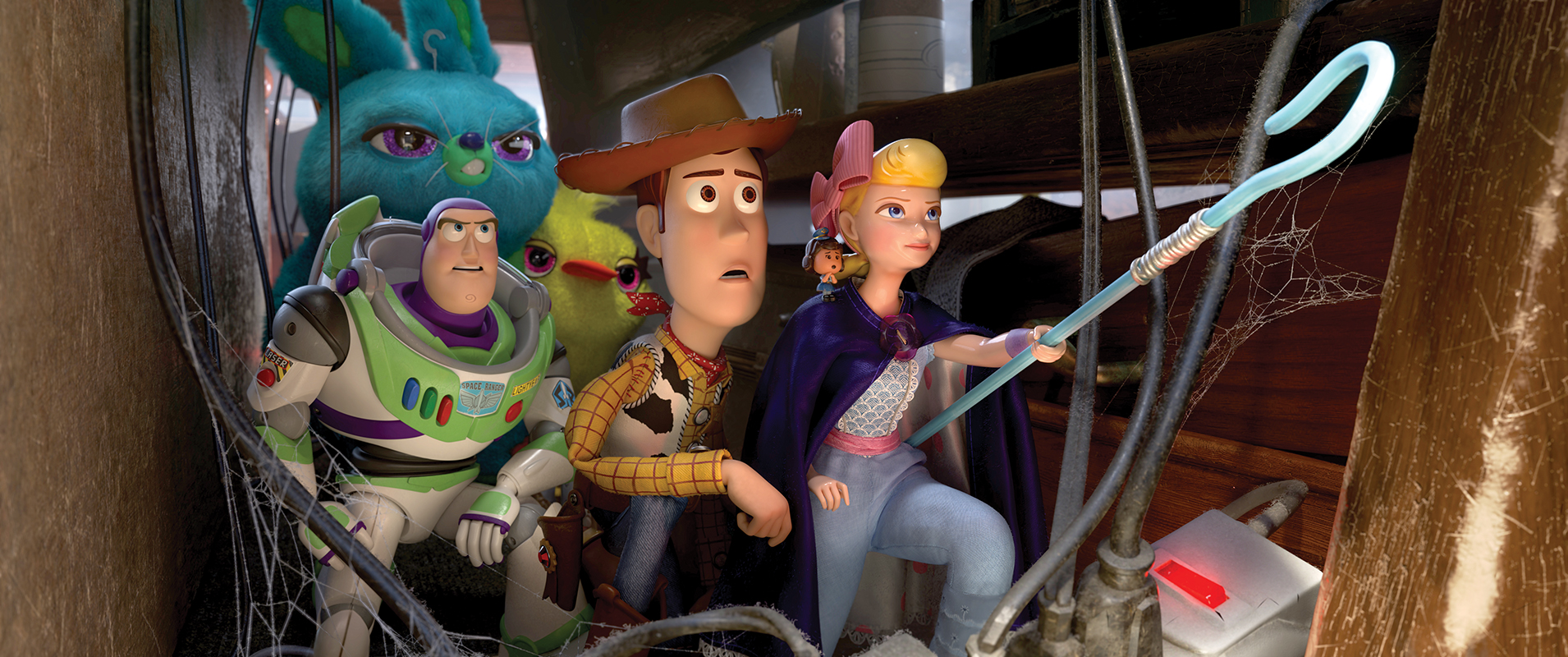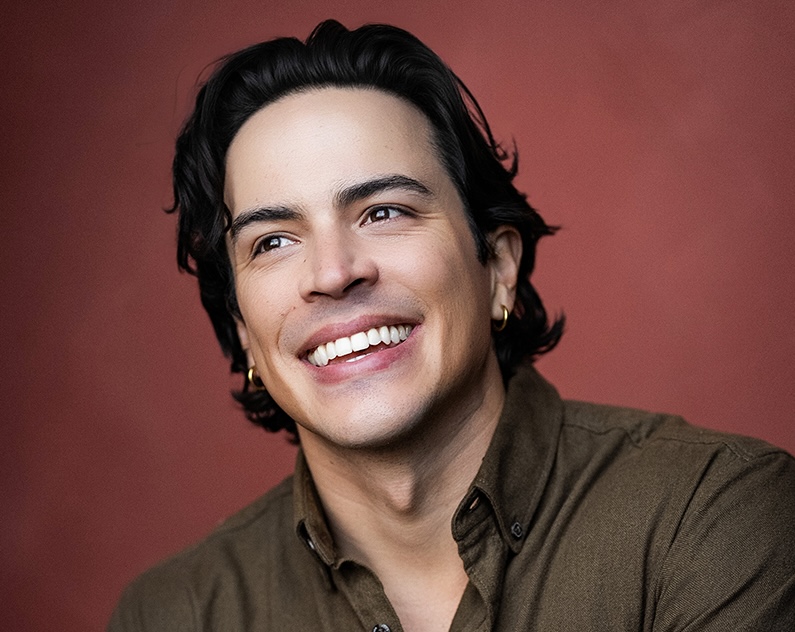Toy Story 4 Review: Existential Excellence
"Toy Story 4" carries the legacy of Pixar's magnificent series into an inspired new direction

Consider this: What would happen if all of the toys in the world suddenly came out? Not out of the closet, mind you, though that’s very often where toys are stored, but rather revealed themselves to their human owners that they are, in fact, sentient beings with feelings, neuroses, dreams, souls? Can you imagine?
In many respects our toys — particularly dolls — are already “alive” to their young owners. They are essential tools that help forge our imaginations, comfort us when we’re frightened or in need, and serve as companions for those times when we are most alone. Tea with teddy bears, war games with G.I. Joes, racing with Hot Wheels, crafting with Legos are all time-honored passages of — and into — life. Eventually, toys become a part of our past, and though there may be sentimental and nostalgic value attached to a cherished few, we basically lose our childhood bonds as we take on the often cumbersome shackles of adulthood.
The folks at Pixar brilliantly tapped into the primal nature of toys in 1994 with their breakout hit Toy Story, a stunning animated romp that dealt with, in ways both heartfelt and exuberant, the rivalry that comes to light when a favored, old-fashioned toy is supplanted by the latest craze. Over the course of fifteen years, through two more films, the Toy Story series gradually deepened, winding up in 2010 with a narrative that had such startling emotional weight, it left entire audiences in fully-earned tears. It was the quintessential capper to a trilogy that both shone a light on Pixar’s unique CGI animation skills — hand-drawn is still the most astounding of all the animated forms, but the Toy Story films found a rich, visual resonance all their own — and on the company’s ability to craft narratives that were simultaneously adventure based and deeply, profoundly heartfelt.
So when Pixar announced Toy Story 4, a healthy skepticism emerged — how do you top that third film? Is there more story to tell? Turns out, there is. Much more. Pixar, to its credit, doesn’t try to match Toy Story 3, but rather leans into the strengths of the series to advance the story, in the process uncovering a fresh, new thematic hold in which to grip the audience. True, Toy Story 4 treads familiar tropes foraged from the first three films, but it deals far more directly with the sentient nature of the toys themselves. They are more fully realized than ever before, and their own sense of longing, their ability to sacrifice elements of themselves for a greater good, their humanity is on powerful display throughout the film’s 100-minute running time.

All good animated films carry lessons, sometimes on their sleeves, sometimes buried deep within. Toy Story 4 does a little of both. Metaphors of liberation (“Who needs a kid’s room when you can have all of this,” says one character gesturing to a gorgeous, glowing carnival vista), of following one’s desire, of coming to terms with one’s sense of self-worth and sense, are magnificently, deftly evoked in the profound (and very, very funny) screenplay by Andrew Stanton and Stephany Folsom, and in the visually witty, timed-to-perfection direction from first-timer Josh Cooley. Toy Story 4 (★★★★★) does the series proud, both thematically and in pacing, balancing over-the-top, whiz-bang action sequences with genuine, nuanced encounters between the toys. It’s also the most visually spectacular of the series, blending a sense of reality with just enough artifice to transport us to a world that is as routinely familiar as it is enmeshed in fantasy.
Contrary to what you might think, the narrative has not been spoiled by the previews, which are remarkably sly in what they reveal. A bounty of new characters introduced into the mix, including Gabby Gabby (Christina Hendricks), an antique doll with sinister designs and an army of unnervingly creepy ventriloquist henchdolls, a fantastically narcissistic daredevil doll (Keanu Reeves, in perhaps his best performance ever), and a pair of carnival plushies who harbor alarmingly overactive imaginations (Jordan Peele and Keegan-Michael Key), keep things fresh and lively.
The most interesting addition, however, is Forky, a creation of five-year-old Bonnie on her first day in Kindergarten. He’s a white plastic spork, with popsicle sticks for feet, a pair of mismatched googly eyes, blue clay for a mouth, and red pipe cleaner for arms and hands. “He was made from trash,” Woody (Tom Hanks, the film’s heartbeat) says, introducing the awkward creation to the rest of the toys, and “he’s now Bonnie’s most important toy.” Amusingly, Forky (Tony Hale, who brings utter perfection to the role), fully understands his origins, and his instincts draw him to hightail it to every wastebasket in sight. Part of the movie’s journey is Forky’s acceptance that he’s not landfill fodder, but something that was created out of love and worthy of being cherished. A toy is what you make it.
Which brings me back to the original question: What if all the toys revealed themselves to their humans. Sure, it would be a very different film — no doubt inducing cardiac arrest in the adult characters — but watching the gang in Toy Story 4 go to extreme lengths to hide the fact that they’re living beings coexisting in our world is, quite honestly, exhausting. You want them to spring to joyful life and exclaim, “We’re here! We’re dear! Play with us!”
Toy Story 4 is rated G and is playing at theaters everywhere. See it in IMAX if you can. Totally worth it. Visit www.fandango.com.
Support Metro Weekly’s Journalism
These are challenging times for news organizations. And yet it’s crucial we stay active and provide vital resources and information to both our local readers and the world. So won’t you please take a moment and consider supporting Metro Weekly with a membership? For as little as $5 a month, you can help ensure Metro Weekly magazine and MetroWeekly.com remain free, viable resources as we provide the best, most diverse, culturally-resonant LGBTQ coverage in both the D.C. region and around the world. Memberships come with exclusive perks and discounts, your own personal digital delivery of each week’s magazine (and an archive), access to our Member's Lounge when it launches this fall, and exclusive members-only items like Metro Weekly Membership Mugs and Tote Bags! Check out all our membership levels here and please join us today!




























You must be logged in to post a comment.